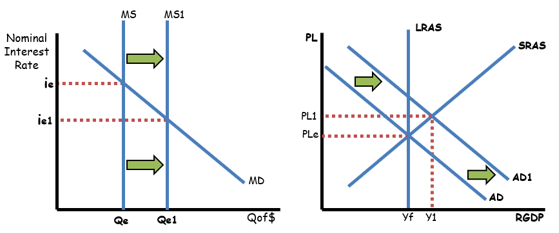The loanable funds market describes the supply and demand for loans within the economy.

Demand for Loanable Funds
On the x-axis, we have the quantity of loanable funds and on the y-axis we have the real interest rates. Once again, we have an inverse relationship (a downward sloping curve) because higher interest rates correspond with fewer loans.
Anything that impacts the potential profit of new investments will shift this demand curve:
- Changes in Economics Outlook
- If businesses are more optimistic in the future ROI of their investments, there will be a rightward shift of the demand
- Changes in Investment Tax Credits
- More tax credits will increase the demand for loanable funds
- Changes in Corporate Income Taxes
- Increase in taxes will decrease the demand for loanable funds
- Productivity of New Capital
- Changes in productivity for new physical capital will shift the curve
- Changes in Real GDP
- Changes in the GDP can shift the demand curve Essentially, if the profit potential increases, the demand for investment will increase
Supply for Loanable Funds
Anything that changes the amount of money saved in US banks will shift the supply of loanable funds.
- Changes in Consumer Disposable Income
- If consumers have more disposable income, they will save more—which shifts the supply curve right
- Changes in National Savings Rate
- An increase in the national savings rate will shift the supply curve right
- Changes in Economic Outlook
- When things are looking good, people actually spend more money. Pessimistic outcomes actually lead to more money being saved
- Foreign Investment
- People in other countries will seek high interest rates that they can get in the US
- Inflows increase the supply and outflows decrease the supply of loanable funds
- Political and Economic Stability
- If there is political instability in a country, there will be a capital outflow as foreign investors pull their money out of the banks